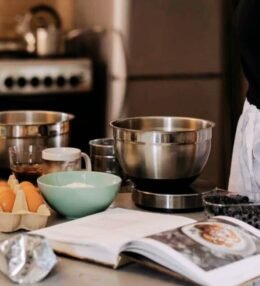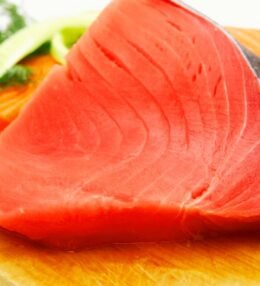The importance of learning how to read and follow a recipe correctly. Why this skill is essential, especially for beginners in cooking, and emphasize the benefits that come with mastering it. Whether you’re cooking for yourself, your family, or guests, being able to produce reliable results is crucial. It can be frustrating to try a recipe and end up with something different from what you expected. By adhering to the recipe, you can replicate the dish successfully each time.
For beginners, cooking can be intimidating. Recipes provide a roadmap, giving you step-by-step guidance to create a dish. By following recipes, you build confidence in your ability to cook. As you gain more experience, you’ll start to understand different techniques, ingredients, and how they work together, making you more comfortable in the kitchen.
Table of Contents
Recipes often include specific techniques, like sautéing, roasting, or simmering. By following a recipe, you’re not just learning how to make a particular dish but also acquiring skills that you can apply to other recipes. This understanding is foundational for becoming a more skilled and versatile cook.

Understanding the Structure of a Recipe
The basic components of a recipe, what each part means, and how it contributes to the cooking process. Knowing how to interpret a recipe’s structure is crucial for successfully preparing a dish.
Recipe Title
The title of a recipe gives you the first clue about what you’ll be making. It usually includes the name of the dish and may provide additional details, like the main ingredients or the style of cooking (e.g., “Creamy Garlic Chicken” or “Spicy Thai Noodles”).
Ingredients List
- Order of Ingredients
Ingredients are typically listed in the order they will be used in the recipe. This sequence helps you organize your prep work and ensures that you add ingredients at the correct time. - Understanding Measurements
Recipes use specific measurements (e.g., tablespoons, cups, grams) to indicate how much of each ingredient you need. If a recipe calls for “1 cup of flour,” it’s important to measure precisely to ensure the dish turns out as intended. - Notes on Specific Ingredients
Ingredients often come with specific instructions, like “chopped,” “diced,” “melted,” or “room temperature.” For example, “melted butter” will mix differently than “cold butter,” impacting the texture of the dish.
Instructions/Method
- Step-by-Step Process
The instructions, or method, are the heart of the recipe. They guide you through the cooking process step by step. Each step is crucial and usually needs to be followed in the order given. - Importance of Sequence
The sequence of steps in the instructions is intentional. For instance, browning meat before simmering it in a sauce helps develop flavor. Skipping or rearranging steps can alter the dish significantly.
Yield and Serving Size
- How Many People It Serves
The yield indicates how much food the recipe will make, usually described in terms of servings (e.g., “serves 4”). This helps plan meals, especially if you need to adjust the recipe to serve more or fewer people. - Adjusting Recipes for Different Servings
If you need to cook for more or fewer people than the recipe specifies, understanding the yield allows you to scale the ingredients and adjust the cooking times accordingly.
Prep Time, Cook Time, and Total Time
- Understanding How Long the Recipe Will Take
Recipes often provide a breakdown of time: prep time (how long it takes to prepare the ingredients), cook time (how long the dish cooks), and total time (the sum of both). Knowing these times helps you plan your cooking around other activities and ensures you’re not caught off guard by a lengthy process. - Planning Accordingly
By understanding the time requirements, you can decide when to start cooking to have the dish ready at the right time. This is especially important for meals that need to be served hot or for coordinating multiple dishes.
Additional Notes or Tips
Some recipes include additional notes, tips, or variations at the end. These might suggest alternative ingredients, offer advice on presentation, or provide tips for making the dish ahead of time. These insights can enhance your cooking experience and provide creative options for modifying the recipe.

Preparing to Cook
Proper preparation is key to avoiding mistakes and ensuring that the cooking process goes as planned.
Read the Recipe Thoroughly
Why It’s Essential to Read the Entire Recipe Before you begin cooking, it’s crucial to read the entire recipe from start to finish. This helps you understand the overall process, identify any steps that require special attention, and ensure that you have all the necessary ingredients and equipment. Skipping this step can lead to surprises, like realizing you need a preheated oven or a specific tool midway through cooking.
Gathering Ingredients
Once you’ve read the recipe, the next step is to gather all the ingredients before you start cooking. This is known as “mise en place,” a French culinary term meaning “everything in its place.” Having everything ready and within reach allows you to focus on cooking without interruptions, reducing the risk of mistakes.
If you’re missing an ingredient, you may consider using a substitute. However, not all substitutions are equal. This section will explain how to choose appropriate substitutes and the potential impact on flavor, texture, or cooking time. For example, substituting honey for sugar can affect sweetness and moisture in baked goods.
Preparing Equipment
Just as important as gathering ingredients is preparing the equipment you’ll need. This includes everything from knives and cutting boards to pots, pans, and measuring tools. Ensuring that your equipment is clean, accessible, and ready to use will make the cooking process smoother and more efficient. For example, if a recipe requires a blender, you should ensure it’s set up and ready before you start cooking.
Cooking Step-by-Step
The importance of following the instructions carefully, managing timing, and making adjustments as needed. It’s about turning the preparation into action, ensuring that the dish comes together as intended.
Following the Order of Instructions
Cooking is often a sequence of precise steps, where each step builds on the previous one. Following the instructions in the order provided is crucial because skipping or rearranging steps can drastically change the outcome. For example, if a recipe instructs you to brown meat before adding liquids, it’s because the browning process adds depth of flavor that can’t be achieved if done later.
Ignoring the sequence can lead to various issues, such as overcooking, undercooking, or failing to develop the right flavors and textures. For instance, adding vegetables too early might cause them to become mushy, while adding them too late could result in undercooked, crunchy bits.
Timing and Pacing
Cooking times provided in a recipe are generally estimates based on the ingredients, equipment, and techniques used. It’s important to understand that these times are guidelines to help you manage the cooking process. For example, simmering a sauce for 20 minutes allows flavors to meld together, but overcooking it could make it too thick or too strong in flavor.
Properly pacing yourself by staying aware of what’s happening at each step helps ensure that everything comes together perfectly. Cooking often involves juggling multiple tasks at once, such as chopping vegetables while something is simmering or baking. This multitasking is a critical skill, and the recipe often assumes that you will be doing several things at the same time.
Adjusting as You Go
- Recognizing When to Make Adjustments
Even when following a recipe closely, sometimes you need to make adjustments based on what you observe. For example, if a sauce looks too thick, you might add a bit more liquid. If something is cooking faster than expected, you might lower the heat. Recipes can’t always account for variations in stoves, cookware, or ingredient quality, so being able to make these real-time adjustments is crucial. - Trusting Your Senses (Taste, Smell, Texture)
Trusting your senses is key to good cooking. Tasting as you go allows you to adjust seasoning or flavors before it’s too late. Similarly, using your sense of smell can help you detect when something is about to burn, while touch can inform you about textures (e.g., whether pasta is al dente or if bread dough has the right consistency). These sensory cues are invaluable tools that help you make better decisions in the kitchen.
Common Pitfalls and How to Avoid Them
The common mistakes that can occur when following a recipe and how to avoid these pitfalls. By being aware of these issues, you can improve your cooking results and become more confident in the kitchen.
Misreading Instructions
- Common Misunderstandings (e.g., Teaspoons vs. Tablespoons)
One of the most frequent mistakes in cooking is misreading measurements, such as confusing teaspoons (tsp) with tablespoons (tbsp). This seemingly small error can have a big impact on the final dish, especially in baking, where precise measurements are crucial. For example, adding a tablespoon of salt instead of a teaspoon could make a dish inedibly salty. The advice here is to double-check measurements before adding ingredients and to familiarize yourself with common abbreviations and terms used in recipes.
Ingredient Substitutions Gone Wrong
Substituting ingredients can be tricky. While some substitutions are straightforward (like using olive oil instead of butter in certain dishes), others can significantly alter the taste, texture, or cooking process. For example, replacing regular flour with almond flour in a baking recipe without adjusting other ingredients can result in a dense, heavy product. To make substitutions wisely, consider factors like flavor, texture, and how the ingredient behaves during cooking. It’s best not to substitute at all, particularly in baking or other precision-based recipes.
Overcooking/Undercooking
Cooking times and temperatures are given in recipes to help you achieve the desired doneness of a dish. However, different stoves, ovens, and cookware can affect these times. Overcooking can lead to dry, tough, or burnt food while undercooking can leave ingredients raw or unsafe to eat. To avoid these issues, this section will provide tips like using a kitchen timer, monitoring food closely, and checking for doneness using visual cues, touch, or a food thermometer. For instance, knowing that chicken should be cooked to an internal temperature of 165°F (74°C) ensures that it’s safe to eat without being overcooked.
Finishing Up
The final steps of completing a recipe, focusing on the importance of checking the dish for flavor and texture, presenting it attractively, and cleaning up efficiently. Taking time to taste, adjust, present, and clean up ensures that the entire experience is satisfying and that the final dish is something you can be proud of.
Tasting and Adjusting Seasoning
Before serving, it’s crucial to taste your dish to ensure it’s seasoned correctly. Even if you followed the recipe precisely, minor adjustments may be necessary. For example, you might need to add a pinch more salt, a dash of pepper, or a squeeze of lemon juice to balance the flavors. This step ensures that the dish is as flavorful as possible and meets your taste preferences. It’s your last opportunity to make the dish perfect.
Presentation
Presentation is an essential part of the dining experience. A dish that looks appealing is more enjoyable to eat. This section will offer tips on how to plate your food attractively, such as using contrasting colors, varying textures, and arranging components thoughtfully. For example, placing a garnish like fresh herbs, a drizzle of sauce, or a sprinkle of nuts can add visual appeal and a burst of flavor. Even the simplest dishes can look gourmet with a little attention to presentation.
Cleaning Up
Cooking can create a lot of mess, but cleaning as you go makes the process more manageable and less overwhelming. This practice involves washing dishes, wiping counters, and putting away ingredients while you cook, rather than leaving everything for the end. For example, you might wash the cutting board and knife while waiting for something to simmer. By the time the dish is ready, most of the cleanup will already be done, allowing you to enjoy your meal without dreading the post-cooking mess.

Conclusion
The importance of reading and following recipes carefully to achieve consistent, reliable results. Understanding the structure of a recipe, preparing properly, and executing each step with attention to detail are fundamental skills that lead to successful cooking.
It will reinforce the idea that cooking is a journey, where each dish offers an opportunity to learn, grow, and become more creative. By gaining confidence through repetition and experimentation, readers can gradually expand their culinary repertoire and develop their unique cooking style.
Finally, the joy and satisfaction that comes from cooking, not just as a means to prepare food but as a rewarding and creative activity. It will inspire readers to embrace the process, take pride in their progress, and enjoy the experience of sharing delicious meals with others.










1 Comment